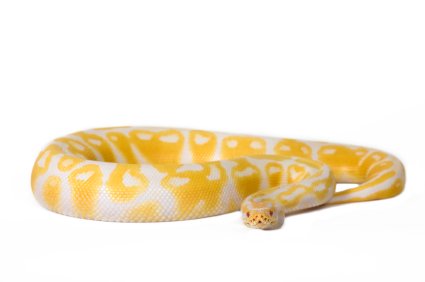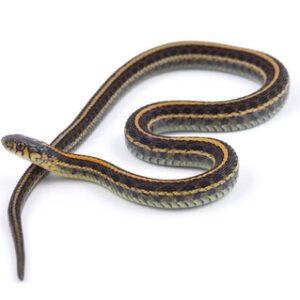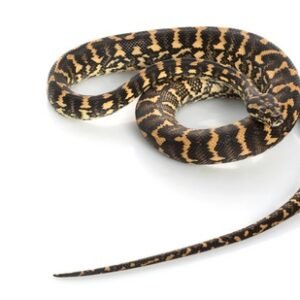Understanding the Albino Ball Python
The albino ball python, known scientifically as Python regius, is a popular morph distinguished by its striking appearance and unique genetic traits. Unlike typical ball pythons that exhibit a variety of colors, albino individuals display a captivating palette of white and yellow or orange, resulting from a genetic mutation that inhibits the production of melanin. This lack of pigmentation is what gives them their distinctive look, making them highly sought after among reptile enthusiasts and collectors.
In terms of size, albino ball pythons generally reach an average length of 3 to 5 feet, similar to other ball python morphs. However, individual size can vary based on factors such as diet, genetics, and overall care. Additionally, these snakes possess the same behavior as their non-albino counterparts. They are known for their docile temperament, making them ideal pets for both novices and experienced herpetologists.
Genetically, albinism in ball pythons is a result of a recessive trait. Breeding two albino ball pythons together will result in offspring that all exhibit albinism, while breeding an albino with a normal-patterned python will yield a mix of normals and carriers of the gene. This genetic aspect is essential for those interested in breeding albino morphs, as understanding inheritance patterns can significantly impact breeding goals and outcomes.
While albino ball pythons are captivating, several misconceptions exist regarding their care. One myth suggests that albino snakes are more fragile or require special care due to their lack of pigment. However, this is not the case; albinos can thrive under standard captive conditions provided proper husbandry is maintained. In their natural habitats in Africa, these snakes inhabit grasslands and savannas, preferring areas where they can find ample cover and avenues for hunting. Understanding both the unique characteristics of the albino ball python and its environmental needs ensures that enthusiasts can provide an appropriate habitat for these remarkable creatures.
Care and Maintenance of Albino Ball Pythons
Albino ball pythons possess unique care requirements that stem from their genetic mutation resulting in a lack of melanin. Providing an appropriate habitat is crucial for their well-being. The enclosure should be spacious, allowing the snake to stretch out and move comfortably. A minimum size of 40 gallons is recommended for adults, equipped with secure lid to prevent escape. The interior should include hiding spots and climbing branches, as these snakes thrive in environments that mimic their natural habitats.
Temperature regulation is essential for the health of albino ball pythons. The warm side of the enclosure should be maintained between 88°F to 92°F, while the cooler side should range from 75°F to 80°F. Using both a heat mat and basking lamps can help achieve these temperatures. Additionally, provide a thermal gradient within the habitat so the snake can choose the temperature that feels comfortable to it. Humidity levels should be kept around 50-60%, with higher humidity (up to 70%) during shedding periods. This can be achieved using a water dish and regularly misting the enclosure.
Dietary needs should not be overlooked, as albino ball pythons require a diet primarily consisting of appropriately sized rodents. Young snakes typically eat fuzzy mice, while larger adults may require rats or other prey. It is important to feed them pre-killed or frozen-thawed prey to avoid injury to the snake. Health issues can arise if the dietary needs are not met, leading to obesity or malnutrition. Regular veterinary check-ups are advisable to monitor any potential health concerns. Watch for signs such as lethargy, swelling, or unusual shedding patterns, which could indicate stress or illness.
Enhancing the living environment with appropriate substrates and enrichment options is vital. Options like aspen shavings, cypress mulch, or paper towels are suitable substrates. Incorporating enrichment, such as interactive toys and climbing structures, will facilitate a more stimulating environment. When handling albino ball pythons, it is crucial to do so gently and confidently, respecting their temperamental nature. By following these guidelines, owners can ensure their albino ball pythons not only survive but thrive in captivity.





